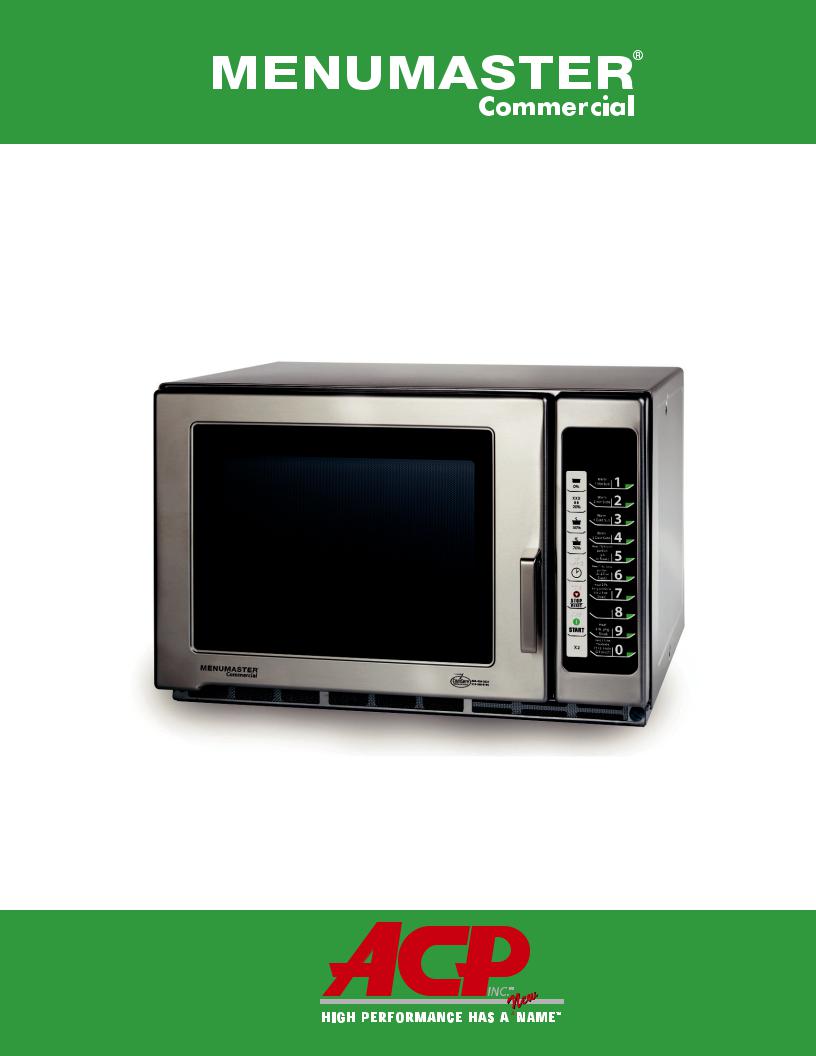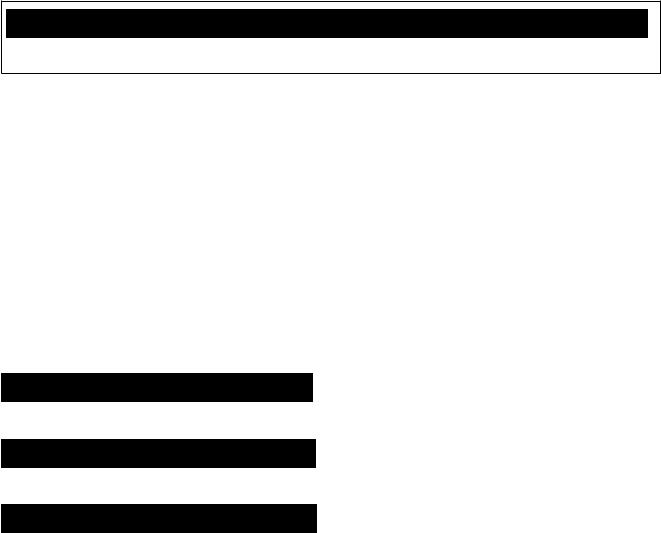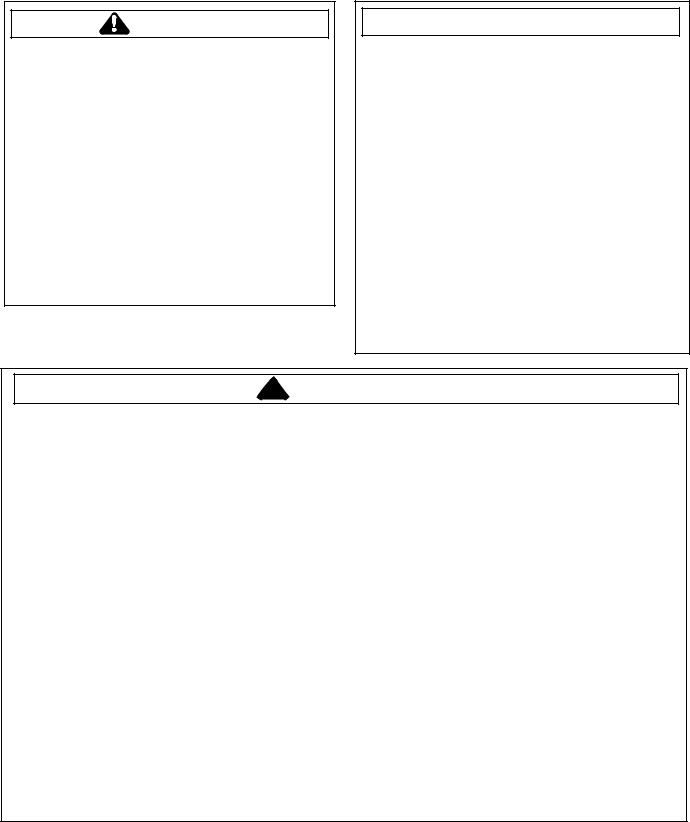Amana Menumaster RFS511SW2A Service Manual

Service Training Manual
RFS Export Subway Model
RFS - 50 Hz
October 2012
16400022
Table of Contents |
|
Important Safety Information........................................................................................ |
1-5 |
RFS 50 Hz Specifications............................................................................................ |
6-8 |
Installation....................................................................................................................... |
7 |
Specifications.................................................................................................................. |
8 |
Quick Start Reference Guide...................................................................................... |
9-11 |
Component Location................................................................................................ |
12-13 |
Disassembly.............................................................................................................. |
14-16 |
Performance Testing Procedures............................................................................. |
17-18 |
Component Testing Procedures .............................................................................. |
19-22 |
Troubleshooting........................................................................................................ |
23-28 |
Schematic / Wiring Diagram.................................................................................... |
29-30 |

1 Important Safety Information
1

Important Information
Important Notices for Servicers and Consumers
ACP will not be responsible for personal injury or property damage from improper service procedures. Pride and workmanship go into every product to provide our customers with quality products. It is possible, however, that during its lifetime a product may require service. Products should be serviced only by a quali ed service technician who is familiar with the safety procedures required in the repair and who is equipped with the proper tools, parts, testing instruments and the appropriate service information. IT IS THE TECHNICIANS RESPONSIBLITY TO REVIEW ALL
APPROPRIATE SERVICE INFORMATION BEFORE BEGINNING REPAIRS.
!WARNING
To avoid risk of severe personal injury or death, disconnect power before working/servicing on appliance to avoid electrical shock.
To locate an authorized servicer please contact:
ACP, Inc.
225 49th Ave. Dr. SW Cedar Rapids, IA USA 52404
E-Mail: Commercialservice@acpsolutions.com Service website: www.acpsolutions.com/service Tel: 1-319-358-8120
Recognize Safety Symbols, Words, and Labels
!DANGER
DANGER— Immediate hazards which WILL result in severe personal injury or death.
!WARNING
WARNING— Hazards or unsafe practices which COULD result in severe personal injury or death.
!CAUTION
CAUTION— Hazards or unsafe practices which COULD result in minor personal injury, product or property damage.
2

Important Safety Information
!WARNING
Read the following information to avoid possible exposure to microwave radiation:
The basic design of the Microwave Oven makes it an inherently safe device to both use and service.
However, there are some precautions which should be followed when servicing the microwave to maintain this safety. These are as follows:
1.Always operate the unit from an adequately grounded outlet. Do not operate on a two-wire extension cord.
2.Before servicing the unit (if unit is operable) perform the microwave leakage test.
3.The oven should never be operated if the door does not t properly against the seal, the hinges or hinge bearings are damaged or broken; the choke is damaged, (pieces missing, etc.); or any other visible damage can be noted. Check the choke area to ensure that this area is clean and free of all foreign matter.
4.If the oven operates with the door open and produces microwave energy, take the following steps:
A.Tell the user not to operate the oven.
B.Contact ACP ComServ immediately.
5.Always have the oven disconnected when the outer case is removed except when making the "live" tests called for in the Service Manual. Do not reach into the equipment area while the unit is energized. Make all connections for the test and check them for tightness before plugging the cord into the outlet.
6.Always ground the capacitors on the magnetron
lter box with an insulated-handle screwdriver before working in the high voltage area of the equipment compartment. Some types of failures will leave a charge in these capacitors and the discharge could cause a re ex action which could make you injure yourself.
7.Always remember that in the area of the transformer there is HIGH VOLTAGE. When the unit is operating keep this area clear and free of anything which could possibly cause an arc or ground, etc.
8.Do not for any reason defeat the interlock switches there is not valid reason for this action at any time; nor will it be condoned by ACP.
9.IMPORTANT: Before returning a unit to a customer, be sure to check for proper switch interlock action.
10.The Microwave Oven should never be
operated with any components removed and/or bypassed or when any of the safety interlocks are found to be defective, or when any of the seal surfaces are defective, missing, or damaged.
11. All microwave ovens meet all requirements
of the radiation control for Health and SafetyAct of 1968. Due to measurement uncertainties, the maximum leakage for the eld will be 4mw/cm2.
12.To ensure that the unit does not emit excessive microwave leakage and to meet the Department of Health and Human Services guidelines, check the oven for microwave leakage using amicrowave oven leakage meter that complies with US Government CDRH / FDA / DHHS requirements and or any other local government requirements.
The maximum leakage level allowed by ACP is 4mw/cm 2.
13.If servicer encounters an emission reading over 4mw/cm2, the servicer is to cease repair and contact the ACP ComServ Department immediately for further direction. ACP
will contact the proper Government Agency upon veri cation of the test results.
3

IMPORTANT SAFETY INSTRUCTIONS
This is the safety alert symbol. It is used to alert you to potential personal injury hazards. Obey all safety messages that follow this symbol to avoid possible injury or death.
!WARNING
When using electrical equipment, basic safety precautions should be followed to reduce the risk of burns, electrical shock, fire, or injury to persons including the following.
1.READ all instructions before using equipment.
2.READ AND FOLLOW the specific
“PRECAUTIONS TO AVOID POSSIBLE
EXPOSURE TO EXCESSIVE MICROWAVE ENERGY” on this page.
3.This equipment MUST BE GROUNDED. Connect only to properly GROUNDED outlet. See “ GROUNDING / EARTHING INSTRUCTIONS” on page 5.
4.Install or locate this equipment ONLY in accordance with the installation instructions in this manual.
5.Some products such as whole eggs and sealed containers—for example, closed glass jars—are able to explode and SHOULD NOT be HEATED in this oven.
6.Use this equipment ONLY for its intended use as described in this manual. Do not use corrosive chemicals or vapors in this equipment. This type of oven is specifically designed to heat, cook, or dry food. It is not designed for industrial or laboratory use.
7.As with any equipment, CLOSE SUPERVISION is necessary when used by CHILDREN.
8.See door cleaning instructions on page A-4 of this owners manual.
9.DO NOT heat baby bottles in oven.
10.Baby food jars shall be open when heated and contents stirred or shaken before consumption, in order to avoid burns.
11DO NOT operate this equipment if it has a damaged cord or plug, if it is not working properly, or if it has been damaged or dropped.
12.This equipment, including power cord, must be serviced ONLY by qualified service personnel. Special tools are required to service equipment. Contact nearest authorized service facility for examination, repair, or adjustment.
13.DO NOT cover or block louvers or other openings on equipment.
14.DO NOT store this equipment outdoors. DO NOT use this product near water – for example, near a kitchen sink, in a wet basement, a swimming pool, or a similar location.
15.DO NOT immerse cord or plug in water.
16.Keep cord AWAY from HEATED surfaces.
17.DO NOT let cord hang over edge of table or counter.
18.For commercial use only.
PRECAUTIONS TO AVOID POSSIBLE EXPOSURE TO EXCESSIVE MICROWAVE ENERGY
A. DO NOT attempt to operate this oven with the door open since open door operation can result in harmful exposure to microwave energy. It is important not to defeat or tamper with the safety interlocks.
B. DO NOT place any object between the oven front face and the door too allow soil or cleaner residue to accumulate on sealing surfaces.
C. DO NOT operate the oven if it is damaged. It is particularly important that the oven door close properly and that there is no damage to the:
1. door (bent)
2. hinges and latches (broken or loosened)
3. door seals and sealing surfaces.
D. The oven should not be adjusted or repaired by anyone except properly qualified service personnel.
SAVE THESE INSTRUCTIONS
4

IMPORTANT SAFETY INSTRUCTIONS
WARNING
To avoid risk of fire in the oven cavity:
a.DO NOT overcook food. Carefully attend oven when paper, plastic, or other combustible materials are placed inside the oven to facilitate cooking.
b.Remove wire twist-ties from paper or plastic bags before placing bag in oven.
c.If materials inside the oven ignite, keep oven door CLOSED, turn oven off and disconnect the power cord, or shut off power at the fuse or circuit breaker panel.
d.DO NOT use the cavity for storage. DO NOT leave paper products, cooking utensils, or food in the cavity when not in use.
 WARNING
WARNING
Liquids such as water, coffee, or tea are able to be overheated beyond the boiling point without
appearing to be boiling due to surface tension of the liquid. Visible bubbling or boiling when the container is removed from the microwave oven is not always present. THIS COULD RESULT IN VERY HOT LIQUIDS SUDDENLY BOILING OVER WHEN A
SPOON OR OTHER UTENSIL IS INSERTED INTO
THE LIQUID. To reduce the risk of injury to persons:
i)Do not overheat the liquid.
ii)Stir the liquid both before and halfway through heating it.
iii)Do not use straight-sided containers with narrow necks.
iv)After heating, allow the container to stand in the microwave oven for a short time before removing the container.
v)Use extreme care when inserting a spoon or other utensil into the container.
! CAUTION
To avoid personal injury or property damage, observe the following:
1.Do not deep fat fry in oven. Fat could overheat and be hazardous to handle.
2.Do not cook or reheat eggs in shell or with an unbroken yolk using microwave energy. Pressure may build up and erupt. Pierce yolk with fork or knife before cooking.
3.Pierce skin of potatoes, tomatoes, and similar foods before cooking with microwave energy. When skin is pierced, steam escapes evenly.
4.Do not operate equipment without load or food in oven cavity.
5.Microwave popcorn should not be popped in oven.
6.Do not use regular cooking thermometers in oven. Most cooking thermometers contain mercury and may cause an electrical arc, malfunction, or damage to oven.
7.Do not use metal utensils in oven.
8.Do not use aluminum foil in oven
9.Never use paper, plastic, or other combustible materials that are not intended for cooking.
10.When cooking with paper, plastic, or other combustible materials, follow manufacturer’s recommendations on product use.
11.Do not use paper towels which contain nylon or other synthetic fibers. Heated synthetics could melt and cause paper to ignite.
12.Do not heat sealed containers or plastic bags in oven. Food or liquid could expand quickly and cause container or bag to break. Pierce or open container or bag before heating.
13.To avoid pacemaker malfunction, consult physician or pacemaker manufacturer about effects of microwave energy on pacemaker.
14.An authorized servicer MUST inspect equipment annually. Record all inspections and repairs for future use.
SAVE THESE INSTRUCTIONS
5

2 RFS511* 50 Hz
Specifications
Installation
·Unpacking the oven
·Radio Interference
·Oven Placement
Power Specification
·InputPower Source
·OutputPower Source
·Power Consumption
Cavity Dimensions
· Weight
6

Installation
Unpacking Oven
•Inspect oven for damage such as dents in door or dents inside oven cavity.
•Report any dents or breakage to source of purchase immediately. Do not attempt to use oven if damaged.
•Remove all materials from oven interior.
•If oven has been stored in extremely cold area, wait a few hours before connecting power.
Radio Interference
Microwave operation may cause interference to radio, television, or similar a oven. Reduce or eliminate interference by doing the following:
•Clean door and sealing surfaces of oven according to instructions in “Care and Cleaning” section.
•Place radio, television, etc. as far as possible from oven.
•Use a properly installed antenna on radio, television, etc. to obtain stronger signal reception.
 WARNING
WARNING
Excessive Weight Hazard
Use two or more people to move and install oven. Failure to do so can result in back or other injury.
Oven Placement
•Do not install oven next to or above source of heat, such as pizza oven or deep fat fryer. This could cause microwave oven to operate improperly and could shorten life of electrical parts.
•Do not block or obstruct oven filter. Allow access for cleaning.
•Install oven on level countertop surface.
Oven Clearances
A—Allow at least 2 inches / 5.1 centimeters of clearance around top and sides of equipment. Proper air flow around equipment cools electrical components. With restricted air flow, oven may not operate properly and life of electrical parts is reduced.
A
A
A
 B
B
7
Specifications
Models |
RFS511SW2A |
RFS511TSW |
Power Source |
|
|
Voltage AC |
230V |
230V |
Amperage |
16 A |
16 A |
Frequency |
50 Hz |
50 Hz |
Single Phase, 3 wire grounded |
X |
X |
Plug Confiiguration / Cord |
CEE 7/7 “Schuko” |
CEE 7/7 “Schuko” |
Power Output |
|
|
Nominal microwave energy |
1100 W |
1100 W |
(IEC705) |
|
|
Minimum temperature rise |
7.7°C / 11°F |
7.7°C / 11°F |
Operating Frequency |
2450 MHz |
2450 MHz |
Power Consumption |
|
|
Cook Condition Microwave |
1900 W |
1900 W |
Dimensions |
|
|
Cabinet |
|
|
Width |
550 mm (21¾”) |
550 mm (21¾”) |
Height |
362 mm (14¼”) |
362 mm (14¼”) |
Depth |
514 mm ( 20¼”) |
514 mm ( 20¼”) |
Cavity Dimensions |
|
|
Width |
362 mm (14¼”) |
362 mm (14¼”) |
Height |
226 mm (9”) |
226 mm (9”) |
Depth |
416 mm (16⅜”) |
416 mm (16⅜”) |
Weight |
|
|
Crated |
28 kg. (61 lbs.) |
28 kg. (61 lbs.) |
Uncrated |
25 kg. (55 lbs.) |
25 kg. (55 lbs.) |
8

3 RFS511* 50 Hz
Quick Start
Reference Guide
Control Panel
·Manual operation
·Programming items
·Qty 2X Pad
Clean Filter
User Options
·Changing options
·Factory presets
9
